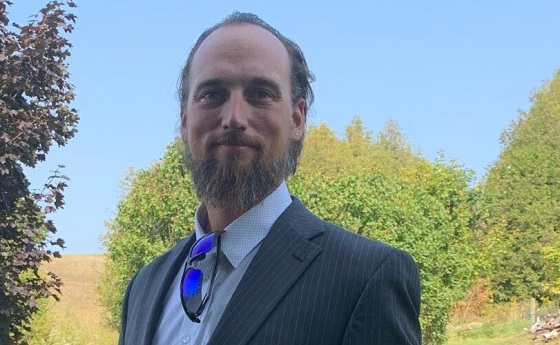COVID-19
BC healthcare workers prevented from returning to work despite understaffing

From the Justice Centre for Constitutional Freedoms
The Justice Centre announces that a 10-day hearing for the constitutional challenge to British Columbia’s Covid vaccination mandates began Monday at the Supreme Court of British Columbia. This challenge draws attention to Public Health Orders that continue to violate the freedom of conscience and religion, right to security, and right to equality of thousands of British Columbian healthcare workers.
On March 16, 2022, the Justice Centre supported a legal challenge to Government of British Columbia Public Health Orders, issued in November 2021, requiring specified groups of healthcare workers to get injected with the Covid vaccine. The lawsuit was filed on behalf of 11 healthcare workers, including front-line staff as well as administrative and management personnel. This court action includes applicants who worked remotely and had no direct contact with patients. These workers refused the Covid vaccine, for which no long-term safety data was available, for reasons of conscience or religion, for medical reasons, or all three. Like thousands of other healthcare workers, they were terminated from their positions and continue to be barred from returning to their work more than two years later.
Over the next two years, the November 2021 Orders were expanded and modified by the BC government, capturing more and more healthcare workers.
- A June 2022 Order required registrants of various medical colleges to disclose their Covid vaccination status to their respective medical colleges, who would report that information to Provincial Health Officer Dr. Bonnie Henry.
- September 2022 Orders expanded the scope of previous Orders, requiring students applying to post-secondary medical programs, post-secondary staff working in care locations, and post-secondary administrative and managerial staff working in health services facilities to disclose their Covid vaccination status to their institutions, who would report that information to Dr. Henry.
- April 2023 Orders expanded the scope of previous Orders by requiring staff member construction workers to get injected to work at hospitals and other medical facilities. Previously, constructions workers, whether staff members or working under contract, as well as other outside service providers working on projects within the BC healthcare system, did not need to show proof of vaccination if they followed protocols set out in the Orders. The April 2023 Orders were silent regarding outside service providers, and specifically exempted construction services working under contract, meaning these groups of workers no longer needed to follow personal protective equipment protocols.
- A June 2023 Order cancelled the June 2022 Order. Registrants of medical colleges would no longer be required to report their vaccination statuses to their colleges, and colleges would no longer be required to report that data to Dr. Henry. However, healthcare workers of any Provincial Health Authority in British Columbia, including workers who did not have in-person contact with patients, were still required to show proof of vaccination before being allowed to work.
- An October 5, 2023 Order requires any unvaccinated new hires to receive the requisite number of doses of the new XBB.1.5-containing formulation of the Covid vaccine to be allowed to work, making it impossible for many doctors, nurses, administrators, other healthcare workers, and non-healthcare workers to work in BC’s healthcare system.
Meanwhile, British Columbia continues to experience a healthcare crisis, according to reports. Emergency rooms in rural communities are closing; wait times are climbing; birthing units in Surrey are suffering from acute shortages – sometimes with fatal consequences. British Columbians are turning to private and even cross-border healthcare options to get treatment.
In addition to pointing out that vaccines have proven ineffective and have caused adverse reactions, lawyers for the Petitioners argue that ordering vaccination as a condition of employment interferes with the right to medical self-determination – protected by Section 7 of the Canadian Charter of Rights and Freedoms. Further, lawyers point out that the mandates failed to provide opportunities for religious and conscientious objections – protected by Section 2 of the Charter. Further, while healthcare workers were terminated for being unvaccinated, the government was hiring remote-working contractors with no requirement that they be vaccinated, generating a concern about equality – protected by Section 15 of the Charter.
Lawyer Charlene LeBeau stated, “The rights of healthcare workers must not be disregarded, even when the goal is to protect public health. This is especially true in relation to mandating a new medical treatment that has a terrible track record for adverse reactions and, in any event, has proven to be ineffective in stopping infection or transmission.”
Justice Centre President John Carpay remarked, “Understaffing in British Columbia’s healthcare system is literally killing people, based on an ideological decision to punish doctors, nurses and other healthcare workers more than two years after they legitimately exercised their Charter right to bodily autonomy. Science and medicine ought to prevail over ideology.”
COVID-19
Judge denies Canadian gov’t request to take away Freedom Convoy leader’s truck

From LifeSiteNews
A judge ruled that the Ontario Court of Justice is already ‘satisfied’ with Chris Barber’s sentence and taking away his very livelihood would be ‘disproportionate.’
A Canadian judge has dismissed a demand from Canadian government lawyers to seize Freedom Convoy leader Chris Barber’s “Big Red” semi-truck.
On Friday, Ontario Court of Justice Judge Heather Perkins-McVey denied the Crown’s application seeking to forfeit Barber’s truck.
She ruled that the court is already “satisfied” with Barber’s sentence and taking away his very livelihood would be “disproportionate.”
“This truck is my livelihood,” said Barber in a press release sent to LifeSiteNews.
“Trying to permanently seize it for peacefully protesting was wrong, and I’m relieved the court refused to allow that to happen,” he added.
Criminal defense lawyer Marwa Racha Younes was welcoming of the ruling as well, stating, “We find it was the right decision in the circumstances and are happy with the outcome.”
John Carpay, president of the Justice Centre for Constitutional Freedoms (JCCF), said the decision is “good news for all Canadians who cherish their Charter freedom to assemble peacefully.”
READ: Freedom Convoy protester appeals after judge dismissed challenge to frozen bank accounts
“Asset forfeiture is an extraordinary power, and it must not be used to punish Canadians for participating in peaceful protest,” he added in the press release.
As reported recently by LifeSiteNews, the Canadian government claimed that Barber’s truck is an “offence-related property” relating to his involvement in the 2022 protests against Canada’s COVID mandates.
At this time, the court ruling ends any forfeiture proceedings for the time being, however Barber will continue to try and appeal his criminal conviction and house arrest sentence.
Barber’s truck, a 2004 Kenworth long-haul he uses for business, was a focal point in the 2022 protests. He drove it to Ottawa, where it was parked for an extended period of time, but he complied when officials asked him to move it.
On October 7, 2025, after a long trial, Ontario Court Justice Perkins-McVey sentenced Barber and Tamara Lich, the other Freedom Convoy leader, to 18 months’ house arrest. They had been declared guilty of mischief for their roles as leaders of the 2022 protest against COVID mandates, and as social media influencers.
Lich and Barber have filed appeals of their own against their house arrest sentences, arguing that the trial judge did not correctly apply the law on their mischief charges.
Government lawyers for the Crown have filed an appeal of the acquittals of Lich and Barber on intimidation charges.
The pair’s convictions came after a nearly two-year trial despite the nonviolent nature of the popular movement.
COVID-19
Freedom Convoy protester appeals after judge dismissed challenge to frozen bank accounts

From LifeSiteNews
Protestor Evan Blackman’s legal team argues Trudeau’s Emergencies Act-based bank account freezes were punitive state action tied directly to protest participation.
A Freedom Convoy protester whose bank accounts were frozen by the Canadian government says a judge erred after his ruling did not consider the fact that the funds were frozen under the Emergencies Act, as grounds for a stay of proceedings.
In a press release sent out earlier this week, the Justice Centre for Constitutional Freedoms (JCCF) said that Freedom Convoy protestor Evan Blackman will challenge a court ruling in his criminal case via an appeal with the Ontario Superior Court of Justice.
“This case raises serious questions about how peaceful protest is treated in Canada and about the lasting consequences of the federal government’s unlawful use of the Emergencies Act,” noted constitutional lawyer Chris Fleury. “The freezing of protestors’ bank accounts was part of a coordinated effort to suppress dissent, and courts ought to be willing to scrutinize that conduct.”
Blackman was arrested on February 18, 2022, during the police crackdown on Freedom Convoy protests against COVID restrictions, which was authorized by the Emergencies Act (EA). The EA was put in place by former Prime Minister Justin Trudeau’s Liberal government, which claimed the protests were violent, despite no evidence that this was the case.
Blackman’s three bank accounts with TD Bank were frozen due to his participation in the Freedom Convoy, following a directive ordered by Trudeau.
As reported by LifeSiteNews, in November of this year, Blackman was convicted at his retrial even though he had been acquitted at his original trial. In 2023, Blackman’s “mischief” and “obstructing police” charges were dismissed by a judge due to lack of evidence and the “poor memory of a cop regarding key details of the alleged criminal offences.”
His retrial resulted in Blackman getting a conditional discharge along with 12 months’ probation and 122 hours of community service, along with a $200 victim fine surcharge.
After this, Blackman’s application for a stay of proceedings was dismissed by the court. He had hoped to have his stay of proceedings, under section 24(1) of the Charter of Rights and Freedoms, allowed. However, the judge ruled that the freezing of his bank accounts was legally not related to his arrest, and because of this, the stay of proceedings lacked standing.
The JCCF disagreed with this ruling, noting, it “stands in contrast to a Federal Court decision finding that the government’s invocation of the Emergencies Act was unreasonable and violated Canadians’ Charter rights, including those targeted by the financial measures used against Freedom Convoy protestors.”
As of press time, a hearing date has not been scheduled.
In 2024, Federal Court Justice Richard Mosley ruled that Trudeau was “not justified” in invoking the Emergencies Act.
In early 2022, the Freedom Convoy saw thousands of Canadians from coast to coast come to Ottawa to demand an end to COVID mandates in all forms. Despite the peaceful nature of the protest, Trudeau’s federal government enacted the EA in mid-February.
After the protesters were cleared out, which was achieved through the freezing of bank accounts of those involved without a court order as well as the physical removal and arrest of demonstrators, Trudeau revoked the EA on February 23, 2022.
-

 Business2 days ago
Business2 days agoOttawa Pretends To Pivot But Keeps Spending Like Trudeau
-

 Agriculture17 hours ago
Agriculture17 hours agoWhy is Canada paying for dairy ‘losses’ during a boom?
-

 Daily Caller2 days ago
Daily Caller2 days agoParis Climate Deal Now Decade-Old Disaster
-

 Automotive1 day ago
Automotive1 day agoFord’s EV Fiasco Fallout Hits Hard
-

 Censorship Industrial Complex2 days ago
Censorship Industrial Complex2 days agoHow Wikipedia Got Captured: Leftist Editors & Foreign Influence On Internet’s Biggest Source of Info
-

 Crime2 days ago
Crime2 days agoThe Uncomfortable Demographics of Islamist Bloodshed—and Why “Islamophobia” Deflection Increases the Threat
-

 Alberta18 hours ago
Alberta18 hours agoAlberta’s new diagnostic policy appears to meet standard for Canada Health Act compliance
-

 Censorship Industrial Complex19 hours ago
Censorship Industrial Complex19 hours agoTop constitutional lawyer warns against Liberal bills that could turn Canada into ‘police state’






